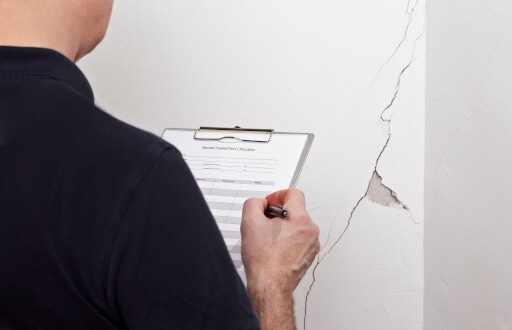Renters have rights, and as a landlord, it’s important to familiarize yourself with them. The two most common rights are known as the right to habitability and the implied warranty of quiet enjoyment. These rights are two separate implied warranties (or covenants) that must be included in your lease agreement. These rights are at the very core of the landlord-tenant relationship and are essentially what a tenant is getting in return for their monthly rent payments.
What Is the Right to Habitability?
Any residential property that is available for rent is assumed to have an implied warranty of habitability. This means that the landlord is guaranteeing that the unit will be in safe, good working order for the tenant’s lease term. For a unit to be habitable, it must:
- Have sufficient access to essential utilities, including water, sewer, electricity, and heat
- Be free of any dangerous or life-threatening conditions, such as exposed electrical wires, a contaminated water supply, chipping lead paint, etc.
Although the right to habitable living conditions seems like a simple concept, habitability is defined in more specifics at the state level, and can vary greatly between states, which is why it’s important to look up your state laws to understand what is expected of your rental property. California’s state-specific requirements for habitability are easily understood and somewhat similar to laws found in most states. For example, rental properties in California are expected to have:
- Effective weather protection of roof, exterior walls, windows, and doors
- Working plumbing and sewer facilities, including hot and cold running water
- Gas, heating, and electrical systems in good working order
- Clean, sanitary buildings and grounds, free from debris, filth, rubbish, garbage, rodents, and vermin
- Adequate trash receptacles in good repair
- Floors, stairways, and railings in good repair
- Deadbolt locks on exterior doors and security locks on some windows
- No lead paint hazards anywhere on the premises
- Safe fire or emergency exits leading to a street or hallway
- Smoke and carbon monoxide detectors in or around each unit
What Is the Right to Quiet Enjoyment?
When a renter is living in your property, they have the right to quiet enjoyment, which is the undisturbed use and enjoyment of the rental unit. In exchange for rent, a tenant gets the following rights:
- A reasonable expectation of privacy
- Peace and quiet, including the freedom from unreasonable and recurring disturbances from the landlord, property manager, and/or neighbors (i.e. noisy neighbors)
- Exclusive right of use, except for the landlord’s reasonable right of access
- A rental property with adequate security that’s free of bodily hazards
- Access to basic utilities such as electricity, heat, and hot water (also a part of the implied warranty of habitability)
With that said, a renter’s right to quiet enjoyment doesn’t supersede a landlord’s right to enter the property with proper notice for routine inspections, property tours, or to make repairs (or in an emergency situation).
However, a landlord or property manager can be in violation of this covenant if they:
- Enter the unit too frequently or without proper notice
- Go through a tenant’s personal property
- Fail to control disruptive nuisances, noises, or behaviors (within reason)
- Harass a tenant in person or over the phone
- Restrict or terminate essential utilities, like water or electricity
- Fail to repair items that affect the property’s habitability
- Prohibit reasonable enjoyment of the property, such as entertaining guests (within reason)
Include Renter Rights in Your Lease Agreement
By ensuring your resident’s right to habitability and quiet enjoyment, you will avoid the majority of landlord-tenant issues. When these essential needs are met, residents often feel safe, secure, and generally content with the unit, which increases the likelihood that they will pay their rent on time and keep the unit in good shape. Before you send the lease agreement to your applicant, be sure that their rights are included in the lease, and you are fully aware of what is expected of you and your rental property. If you're having trouble creating a lease agreement, you should consider using Apartments.com. With our Rental Tools platform, you can easily create a lease that fits your property and your standards. Our fully customizable lease agreements are state-specific and legally binding, meaning you can create a lease no matter where your property is located, and it will adhere to all state laws and local ordinances. Once your lease is created, your tenants can quickly sign online. No more hand-delivering paper leases and then trying to find a place to store them! Apartments.com keeps all your leases neatly organized and accessible so you can reference them whenever you like.











